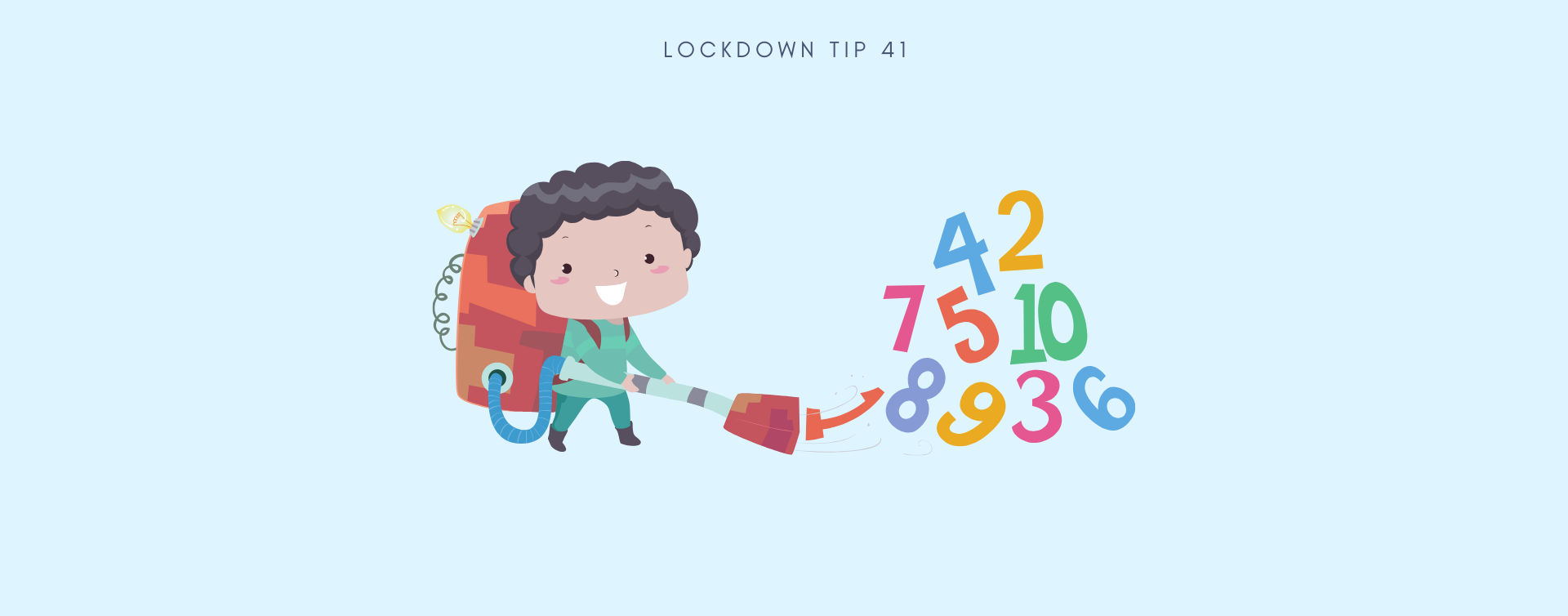Lockdown Day 41 – Using the body to count
Numeracy and Arithmetic
Today’s post is for all of you who are stressing that your children are missing out on learning ‘real stuff’ like Maths! As we have said before, laying foundational skills is crucial to the child’s understanding of later, more abstract concepts. What is also important to realise, is that young children initially learn best when whatever it is that they are learning involves them and their bodies! Pen and paper activities follow later, when the brain already has a concrete experience to base the what is written on the paper on.
* BODY COUNTING *
Yes – that does sound a bit strange, but all we will need today is the child’s body!
The human body is in fact a great resource for counting and the development of key mathematical skills.
We will give you some ideas to start you off…
1. FINGERS AND TOES
Count fingers on one hand (5) and fingers on the other hand (5), toes on one foot (5) and toes on the other foot (5). What do we notice? We have the SAME number of digits on each of these limbs.
We can ADD the fingers and toes of both hands together (5+5=10; 10+5=15; 15+5=20; 10+10=20).
We can SUBTRACT (10-5=5; 20-10=10; 5-3=2… and so on).
We can MULTIPLY ((5×2=10; 5×3=15; 5×4=20).
2. SYMMETRY
We can also explore symmetry by drawing a line (eyeliner, or lipstick could work!) down the child’s body on the midline. Stand the child in front of the mirror and have a discussion about symmetry and what it means.
If you have a large sheet of paper, you can also ask the child to lie on the paper and draw around the child’s body. Cut it out, and then fold the body in half across the midline to show that what is on one side of the body is reflected on the other side.
3. ODDS AND EVENS
Following on from the discussion on symmetry, you can start by asking the child to identify all the ‘PAIRS’ on the body – eyes, ears, nostrils, shoulders, arms, elbows, hands, hips, legs, knees, ankles, feet… Then look for the ‘SINGLES’ – nose, mouth, tongue, neck, torso, bellybutton…
You can then introduce the child to the concept that pairs are EVEN NUMBERS and singles are ODD numbers.
4. MEASUREMENT
Whether you use a ruler, a tape measure or a piece of string, there are many opportunities to explore measurement of the human body. How long is your nose compared to your ear? How long is your arm compared to your leg? Which is longer? Which is shorter? Which is the same? How many times can you fit the length of your foot into the length of your body?
So many options, so little time!
****



